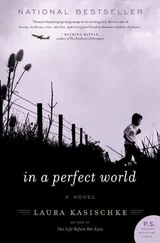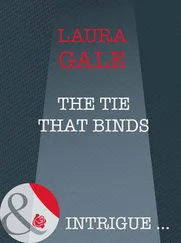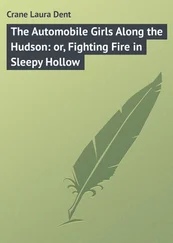“You can see,” Mr. Dientz said, “that it’s truly like sculpting, the kind of work that has to be done on a face in the kind of condition in which this particular decedent was delivered to me. Luckily, the skull was mostly intact, and provided in its entirety, so that the fragmented sections could be glued back to their original places.” Mr. Dientz inhaled, as if reexperiencing the exhausting task in his memory. “I was then able to use something we call mortician’s putty to cover the bone, and then of course, because of the burning and discoloration, I needed to use mortuary wax as a kind of masking. But after that, with some cosmetic work, she was really almost finished. The hair needed only some styling and a synthetic addition or two. That was lucky, considering the damage from the fire to her skin. In total, maybe five hours work? Sadly, until the two of you, no one except me has ever seen her.”
Perry leaned in closer.
The face of the girl in the digital photograph was like no human face he had ever seen.
She radiated something so purely radiant that he wanted to close his eyes and lean forward at the same time, to disappear inside it. He had the feeling that, if he put his hand to the computer screen and touched her, she might wake up. She would be startled, confused, perhaps, but she would be more alive than anyone else in this room.
She had her eyes closed, this dead girl in the photo, but Perry didn’t have the sense that she couldn’t see. He had the sense that she no longer needed to have her eyes open to be able to see. She was seeing everything. She was everything. He had to lean back in the plush velvet chair and close his own eyes, and then open them again, and then he looked from Professor Polson to Mr. Dientz, and back to the girl.
“Perry?” Professor Polson asked.
“It isn’t her,” he said, shaking his head. “That’s not Nicole.”
She took only the things she’d need for a night in a motel—she couldn’t stay at Rosemary’s, not with her children there, not in the state she was in—but when Shelly closed the door behind her, she felt an intense moment of grief for the things inside the house: the teacups and the comforter and the prints on the walls and her shelf of CDs, things she felt she might possibly never see again. No one ever knew, did they?
She didn’t bother to lock the front door. It was such a safe neighborhood, she’d never bothered—a fact she’d shared with Josie.
Her hands were still cramped and shaking from the shovel, the hard early winter ground. As she buried Jeremy (with a blanket, because it was unbearable to think of him in the cold, in the dirt) and wept, she thought about whether she should call the police, and decided that, if she ever did, it could not be now.
The darkness was pale on the lawn.
The moon was full.
The snow was falling fast, and it made a webby froth on the grass.
There was what seemed to be an unusually large number of students out, walking in small groups or in pairs, girls in ridiculously high heels leaning against one another, slipping around, making their way to bars, she supposed, and parties, where exciting and terrible things would happen to them. There would be kisses, and accidents, and endearments, and bitter words exchanged. Someone would fall in love. Someone would dance all night. Someone would get drunk, get raped, get hurt.
Shelly had to wait for a couple kissing in the middle of her street to break apart (two beautiful blondes, the girl on tiptoes to reach the mouth of the boy) before she could pull out of her driveway. They noticed her taillights eventually, and laughed, and moved with their arms still around each other, to the sidewalk. When Shelly backed up and passed a few feet from them, separated by the rivulets of melting snow on the glass of her passenger window, the girl (whose scarlet lips were parted over her white teeth) gave Shelly the finger, and then the couple let go of each other, doubling over with laughter, slipping around on the sidewalk, headed away, lit up in the moonlight—two incredibly beautiful, pointless human beings with no idea what awaited them—and Shelly had no choice but to drive past them again, trying not to stare, willing herself not even to glance at them in her rearview mirror, but watching them anyway.
They had nothing to do with her.
She knew that.
She could stand out in the snow all night and lecture those two about the fleetingness of youth, the dangers of this world, the accumulating importance of every act in this life, the thin thread, so easily snapped, between death and life, or simply the importance of being respectful of one’s elders, and they would never hear a word.
“Go,” Professor Polson said, and handed Perry the keys to Professor Blackhawk’s car. “I’m going to stay and talk to Ted Dientz here about possibilities. Identification. That sort of thing. He seems willing to work with us. He seems intrigued.”
Perry agreed.
At first, when Perry said that the girl in the photograph was not Nicole, Mr. Dientz had stammered some defensive remarks about how even a miracle worker can’t make a girl who’s been burned over 90 percent of her body and who’s sustained massive head trauma look like she did in life. But when he realized that Perry and Professor Polson weren’t questioning his skills as a reconstructionist, but actually questioning whether or not this girl, in this photo, was Nicole, he seemed excited.
Perry could imagine Mr. Dientz perfectly, suddenly, as a reader of detective fiction—the kind of man for whom such a mystery offered an intellectual challenge, a thrilling possibility, and who wouldn’t think it was necessarily out of the realm of possibility that a dead girl could be exchanged for a living girl, buried in her stead. He at least wanted to entertain the possibility for a little while.
“You know,” he said, “stranger things have happened. I won’t even go into it, but let me tell you—”
He didn’t tell them what stranger things, but he did tell them that, just because so many stranger things had happened, in his years as a mortician he’d begun, years before, collecting the DNA of every body he’d had “dealings with.”
“The military paved the way. They developed such a simple system of collecting DNA that, in my humble opinion, anyone who deals with the dead would be remiss not to take advantage of it.”
He went on to explain that he made, for each body, a “bloodstain card,” and kept them stored and filed in his basement.
“The tiniest drop of blood carries the entire blueprint, you know. All the genetic information for a single being and his or her family going back to the origins of the species!”
Professor Polson nodded as if she knew exactly what he was talking about, and asked, “So, you’ve kept a bloodstain sample card for Nicole?”
“Of course. All I would need is about five strands of hair from her mother or a sister to positively identify whether or not the bloodstain I have on file belonged to a relative of one of those Werner females. Just get me the hairs and I’ll make a call to my pals at Genetech, and for eight, nine dollars, we’ve got our answer.”
Mr. Dientz and Professor Polson talked excitedly about how swift, how efficient, it had become to trace the dead to the living, or to each other. Mr. Dientz was clearly attracted to Professor Polson. Twice, he’d called her “my dear,” and when she was looking through her briefcase, safely distracted, Perry had seen him lean over his desk and peer at the place where the buttons of her silk blouse were undone, where a bit of cleavage could be glimpsed. It probably didn’t hurt either that, all along, she’d been expressing admiration for his work, for his facility, for his skills. She’d talked to him about other funeral homes she’d visited, a convention of morticians she’d attended, morgues in other states and countries, practices long forgotten and those still in vogue, and she’d compared his favorably to all those. Either Professor Polson knew this would make Mr. Dientz putty in her hands, or she genuinely admired and understood him.
Читать дальше












